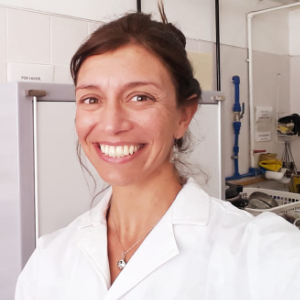Title : The use of vacuum impregnation in the traditional and innovative processing of fish products
Abstract:
The consumption of fish and seafood is highly recommended worldwide because of its proven benefits on human health. Their nutritional importance is based on the content of high biological value proteins and polyunsaturated n-3 fatty acids, vitamins and minerals. However, its composition makes them highly perishable, for the presence of low- molecular-weight nitrogen compounds, almost neutral pH and high water activity (aw). This fact motivated the development of preservation methods to extend fish shelf-life. In this context, hurdle technology (HT) irrupted into food scenario responding to the increasing demand of healthy food, usually related with minimal processing to reduce nutritional losses. HT combines low intensity barriers to create a hostile environment for microorganisms. Our research include the use of vacuum impregnation (VI) among these hurdles, in either traditional or innovative preservation methods, to valorize fish species which are underexploited or have different commercial importance. VI modifies mass transfer mechanisms by the application of a partial vacuum pressure (p1) to food immersed in a solution for a certain time (t1) and the further restoration of atmospheric pressure during t2, which favors the impregnation with the solution of interest. We studied different fish and VI treatments: 1) Biopreservation of hake (Merluccius hubbsi) fillets (1% p/v Nisin, p1=50-100 mbar, t1=t2=5 min); 2) Osmotic dehydration (OD) of flounder fillets in quaternary solution (10%p/v NaCl, 3%p/v Sucrose, 0.5%p/v acetic acid; 4 vacuum pulses cycles: p1=100 mbar,t1=5,t2=10 min, total: 7h); and 3) Brining of white fish fillets (10%p/v NaCl; p1=100 mbar, t1=5 min, t2=30, 60, 120, 180, 240, 300, 360 and 420 min). We analyzed Impregnation Percentage (IP), water, salt, sucrose and acetic acid contents, aw, mesophilic bacteria counts (MB), Staphylococcus ssp., color (L*,a*,b*) and texture (Texture Profile Analysis) of VI and control (treated at atmospheric pressure) samples. Statistical analyses included Two-ways ANOVA, MANOVA, Tukey Test (α=0.05) and Principal Component Analyses (PCA). Solutes mass transfer kinetics in 2) and 3) were properly modeled by Peleg equation (R2>0.971). In 1) IP and nisin activity was higher in hake fillets treated with 100 mbar (8670 IU/100g), than with 50 (6477 IU/100g) and 0 mbar (5755 IU/100g), with no significant changes on fish color. There was a significant reduction of MB and Staphyloccocus spp. counts in hake treated with VI, which extended the product shelf-life. In 2) was a significant positive effect of VI on mass transfer kinetics of salt, sucrose and acetic acid towards the fish muscle during flounder OD. This implied shorter processing time, as well as lower aw values influencing the product stability. In 3) salt gain improved by VI. Total mass change was positive and significantly higher in VI fillets, resulting in higher product yield. The use of VI reduced salting processing time in a 75%, according to Peleg model predictions. VI did not affect the color and texture of brined hake. PCA indicated that fresh hake and 240min brined samples differed in IP, NaCl, color and elasticity. The described experiences prove the positive effect of VI on fish processing efficiency, and let glimpse its potential applications in combination with other process or hurdles for the development of fish products.



